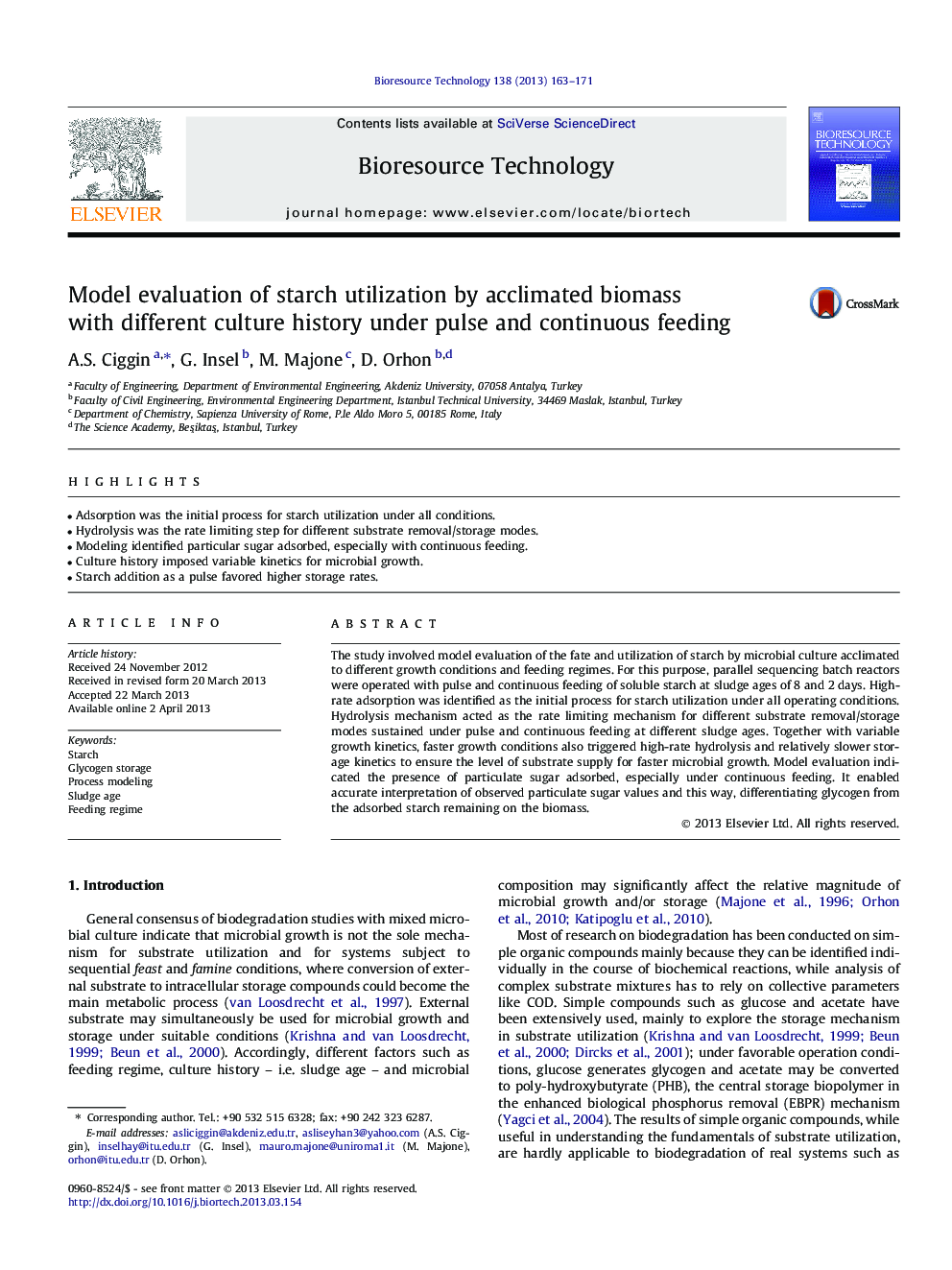| Article ID | Journal | Published Year | Pages | File Type |
|---|---|---|---|---|
| 7082670 | Bioresource Technology | 2013 | 9 Pages |
Abstract
The study involved model evaluation of the fate and utilization of starch by microbial culture acclimated to different growth conditions and feeding regimes. For this purpose, parallel sequencing batch reactors were operated with pulse and continuous feeding of soluble starch at sludge ages of 8 and 2Â days. High-rate adsorption was identified as the initial process for starch utilization under all operating conditions. Hydrolysis mechanism acted as the rate limiting mechanism for different substrate removal/storage modes sustained under pulse and continuous feeding at different sludge ages. Together with variable growth kinetics, faster growth conditions also triggered high-rate hydrolysis and relatively slower storage kinetics to ensure the level of substrate supply for faster microbial growth. Model evaluation indicated the presence of particulate sugar adsorbed, especially under continuous feeding. It enabled accurate interpretation of observed particulate sugar values and this way, differentiating glycogen from the adsorbed starch remaining on the biomass.
Related Topics
Physical Sciences and Engineering
Chemical Engineering
Process Chemistry and Technology
Authors
A.S. Ciggin, G. Insel, M. Majone, D. Orhon,
